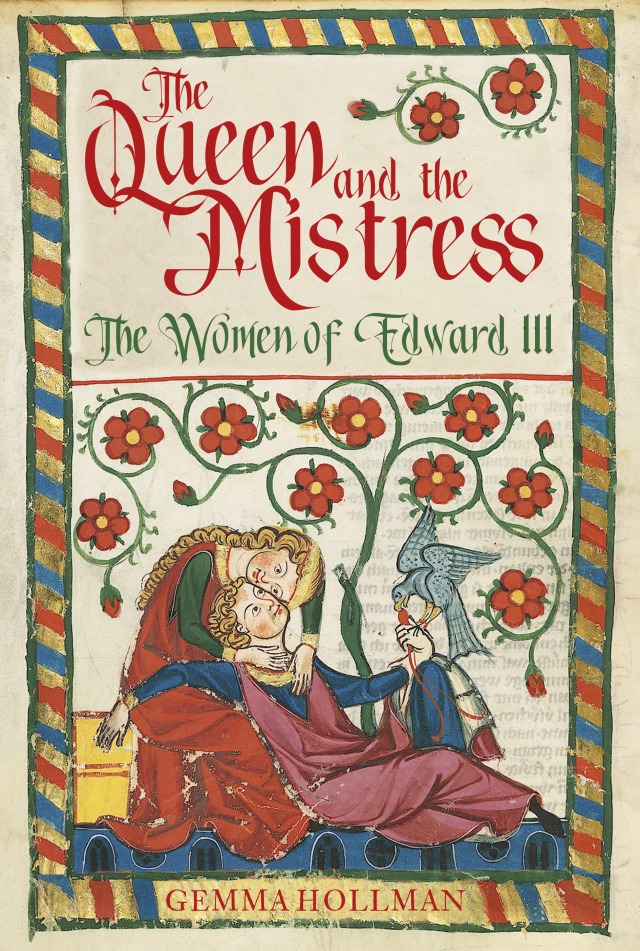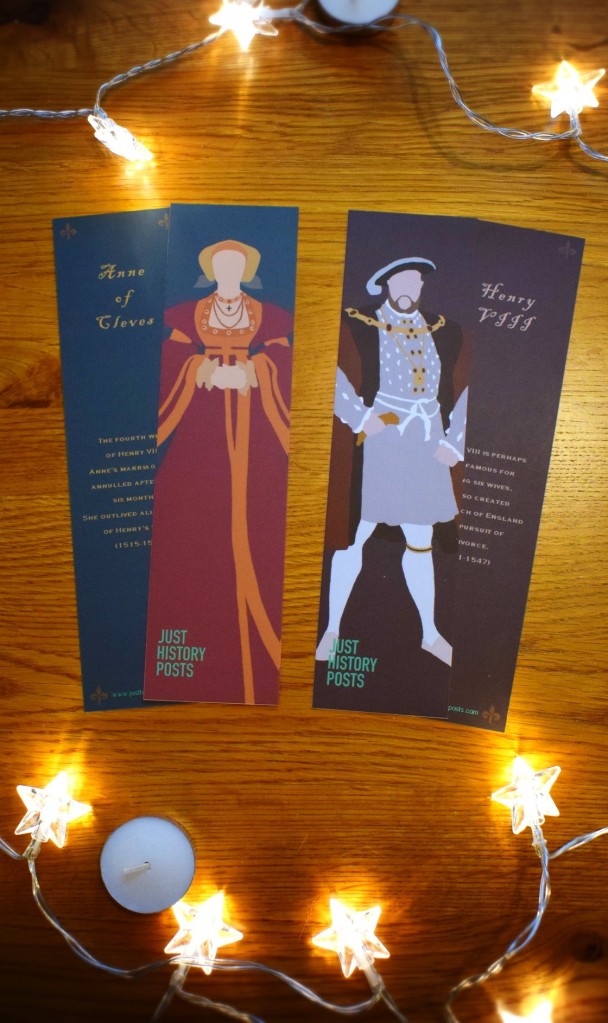Today on Just History Posts I am very excited to be hosting Sylvia Barbara Soberton on her blog tour for her new book, Ladies-in-Waiting: Women Who Served Anne Boleyn. Sylvia is a writer, historian and researcher specialising in the history of the Tudors and I actually had the pleasure of interviewing her two years ago. Her new book sounds fascinating, and today Sylvia has written us a special blog post about whether Gertrude Courtenay did indeed accuse Anne Boleyn of witchcraft or not… over to Sylvia!

The aspects of Anne Boleyn’s life and death are fiercely debated by historians, yet her ladies-in-waiting remain an understudied topic. Much emphasis is usually put on Anne’s relationships with the men in her life: her suitors, her royal husband, her father and brother and her putative lovers who were executed on 17 May 1536. By concentrating on a previously neglected area of Anne Boleyn’s female household, this book seeks to identify the women who served Anne and investigate what roles ladies-in-waiting played in this Queen’s household.
Gertrude Courtenay, Marchioness of Exeter, was among the highest-ranking of Anne Boleyn’s ladies-in-waiting. She was also one of Anne’s most ardent enemies. During the years of Anne Boleyn’s rise to power, Gertrude and her husband remained loyal to Queen Katharine of Aragon. In 1527, Henry VIII decided that, at forty-two, Queen Katharine was too old to bear children, and so he sought an annulment. What he initially believed would take about a year to accomplish actually took six long years. During this time, Katharine’s popularity grew while Anne became a figure of scandal.
“Unlawful love”
Gertrude and her husband Henry, together with their close friends the Pole family (that included Margaret, Countess of Salisbury) privately sneered at Anne Boleyn’s rapid elevation. They believed the King had decided to divorce their “good Queen Katharine” because he was was “[ca]tched yn the snare off unlawfull love with the lady Ane”[1], implying that Anne used love magic. The comment about “unlawful love” carried witchcraft connotations. Provoking someone to “unlawful love” was among the tricks imputed to women using witchcraft to “snare” their lovers and fell under the category of love magic. It was not punishable during Anne’s lifetime, but it would become a felony under the 1542 Witchcraft Act.[2]
Although Anne was not charged with witchcraft during her trial, an air of scandal surrounded her relationship with the King, and some commentators suggested that Henry VIII was “charmed by potions or otherwise”, so Gertrude and her faction were not alone in spreading gossip linking Anne with witchcraft.[3]


Henry VIII’s first two wives, Catherine of Aragon and Anne Boleyn (WikiCommons)
“Seduced by sortileges and charms”
In 1536, shortly after Anne Boleyn miscarried a son, Gertrude informed the Imperial ambassador Eustace Chapuys that she and her husband:
“[…] had heard from the lips of one of the principal courtiers that this King had said to one of them in great secrecy, and as if in confession, that he had been seduced and forced into this second marriage by means of sortileges and charms, and that, owing to that, he held it as null. God (he said) had well shown his displeasure at it by denying him male children. He, therefore, considered that he could take a third wife, which he said he wished much to do.”[4]
There are two versions of Chapuys’s despatch, one in the Letters and Papers and another one in the Spanish Calendar of State Papers. The version in the Calendar of State Papers is the one cited above, whereas the Letters and Papers translation uses the word “witchcraft” instead of “sortileges and charms”.[5]

If proven, allegations of witchcraft could result in the dissolution of a marriage. The most recent example in living memory was the accusation of witchcraft with special emphasis on love magic levelled against Henry VIII’s grandmother Elizabeth Grey, née Woodville. The clandestine nature of Edward IV’s marriage led Richard III’s Parliament to claim in 1483 that the wedding had been procured “by sorcery and witchcraft, committed by the said Elizabeth and her mother, Jacquetta, Duchess of Bedford”.[6] According to the act, witchcraft committed by Elizabeth and Jacquetta was “the common opinion of the people and the public voice, and the fame is through all this land”.[7] In the end, it was not witchcraft that invalidated Elizabeth Woodville’s marriage to Edward IV: it was the King’s alleged pre-contract with another woman. Henry VIII had clearly looked into what legal basis had been used in 1483 to annul Edward IV’s marriage to Elizabeth Woodville; his comment about being seduced with witchcraft clearly implies so, as well as the fact that he tried to use Anne’s earlier pre-contract with Henry Percy.

Whether Henry VIII truly said that he believed Anne Boleyn seduced him by witchcraft is impossible to prove. It is likely that Gertrude spread the rumour to tarnish Anne’s reputation. In any case, even if Henry VIII wanted to accuse Anne of witchcraft, it was not an offence punishable by death until 1542, when a statute was passed making it a felony “to practise, or cause to be practised, conjuration, witchcraft, enchantment or sorcery […] to provoke any person to unlawful love”.[8] The King would come up with something much more malicious to get rid of his wife. Anne was executed for adultery, incest and high treason on 19 May 1536.
A huge thank you to Sylvia for writing for us today – I am certainly intrigued to learn more about the women who surrounded Anne Boleyn! If you would like to purchase Sylvia’s book, then check out the links below:
Amazon US Kindle Paperback Hardcover
Amazon UK Kindle Paperback Hardcover
Previous Blog Post: The Queen and the Mistress
You may like: An Interview With: Sylvia Barbara Soberton, Historical Author
List of Blog Posts: here Blog Homepage: here
Buy my books via the pictures below! Or why not check out our shop?

Follow us:
[1] Letters and Papers, Foreign and Domestic, Henry VIII, Volume 13 Part 2, n. 800.
[2] Sir William Searle Holdsworth, A History of English Law, p. 510-511.
[3] Letters and Papers, Foreign and Domestic, Henry VIII, Volume 5, n. 1114.
[4] Calendar of State Papers, Spain, Volume 5 Part 2, n. 13.
[5] Letters and Papers, Foreign and Domestic, Henry VIII, Volume 10, n. 199.
[6] Titulus Regius http://www.richard111.com/titulus_regius.htm
[7] Ibid.
[8] Danby Pickering (ed.), The Statutes at Large, From the Thirty-Second Year of King Henry VIIII, to the Seventh Year of King Edward VI, p. 79.






Wow, I just assumed witchcraft was illegal since, well… whenever it first became seen as something negative! 1542 was the year Catherine Howard was beheaded; Henry must have been in a particularly foul and dangerous mood that year 😬
LikeLiked by 1 person
Yes, people normally assume this! Throughout the medieval period witchcraft was seen as bad but it was seen as a matter for the church courts, there was not an actual law about it though
LikeLiked by 1 person